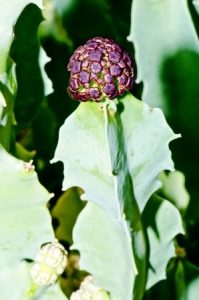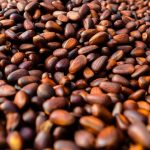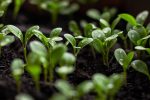
The succulent plant, Caralluma has been consumed in India by hunting tribes for generations to suppress hunger especially on long expeditions. The main plant species is Caralluma fimbriata and has been used in Indian folklore but there are other plants in the genus – about 260 in all.

It is grown as an ornamental and is commonly found on rockeries or as a border plant. It grows freely in a number of countries throughout Africa, in Saudi Arabia, Canary isands, Afghanistan and nowadays in Southern Europe.
The succulent is also used as a vegetable and is turned into jams, pickles, chutneys and preserves.
Caralluma fimbriata extract has received Generally Recognized As Safe (GRAS) status for use as a nutraceutical to combat the most serious public health concern.
Caralluma extracts are now taken to reduce appetite and thus reduce weight loss. It is also used to quench thirst and even to increase exercise endurance. The main phytochemical ingredients are pregnane glycosides, flavone glycosides, megastigmane glycosides, bitter principles, saponins and various other flavonoids (Bader et al., 2003). It is believed that the appetite suppression is due to the pregnane derivatives although the mechanisms of its action are not at all clear.
Extracts of Caralluma are now available as weight loss supplements and are traded as Caralluma Burn™.
One clinical trial conducted by the Institute of Population Health and Clinical Research, at St. John’s National Academy of Health Sciences in Bangalore (India) is most revealing. They assessed the effect of Caralluma extract in 50 overweight individuals in a placebo controlled randomized trial (Kuriyan et al., 2006) where the diet was controlled and they followed an exercise protocol. Over 12 weeks, one group received 1 g of the Caralluma extract per day for 60 days. After 30 and 60 days of intervention, blood glucose and lipids were measured along with other features of anthropometric detail such as dietary intake and appetite.
What proved most interesting was a trend towards loss in body weight, body mass index (BMI), body fat and other measures of being overweight versus the placebo. Over the two month period, the Caralluma extract appeared to suppress appetite and lessen waist circumference.
Later on, a randomized, double blind placebo controlled clinical study with 43 adults between 29 and 59 years of age repeated the findings (Astell et al., 2013). In that study, the group taking Caralluma found there was a decline in the palatability of test meals and sodium intake along with a reduction in all those measures of obesity such as BMI, blood pressure, total fat etc.
There are also some significant rat studies which show these extracts are also effective (Kamalakkannan et al., 2010) in the area of reducing weight.
Reference
Astell, K. J., Mathai, M. L., McAinch, A. J., Stathis, C. G., & Su, X. Q. (2013). A pilot study investigating the effect of Caralluma fimbriata extract on the risk factors of metabolic syndrome in overweight and obese subjects: a randomised controlled clinical trial. Complementary Therapies in Medicine, 21(3), pp. 180-189.
Bader, A., Braca, A., De Tommasi, N., Morelli, I. (2003). Further constituents from Caralluma negevensis. Phytochemistry, 62 pp. 1277–1281.
Kamalakkannan, S., Rajendran, R., Venkatesh, R. V., Clayton, P., & Akbarsha, M. A. (2010). Antiobesogenic and antiatherosclerotic properties of Caralluma fimbriata extract. Journal of Nutrition and Metabolism. Internet.
Kuriyan, R., Raj, T., Srinivas, S. K., Vaz, M., Rajendran, R., & Kurpad, A. V. (2007). Effect of Caralluma fimbriata extract on appetite, food intake and anthropometry in adult Indian men and women. Appetite, 48(3), pp. 338-344.



If you have any more info. On the cosmetic side I’d like to know. Wouldn’t mind getting some more data from you.
We are interested in developing some of these weight reduction products but not sure if this what we really need.
I don’t know if this works for everyone but for me it gave me bloating, and constipation.